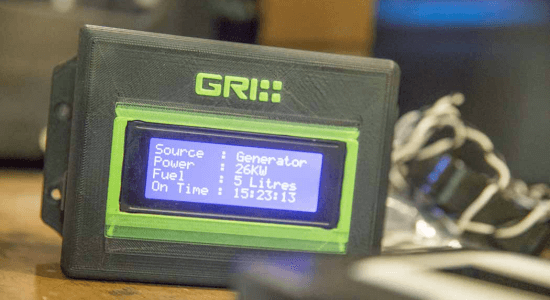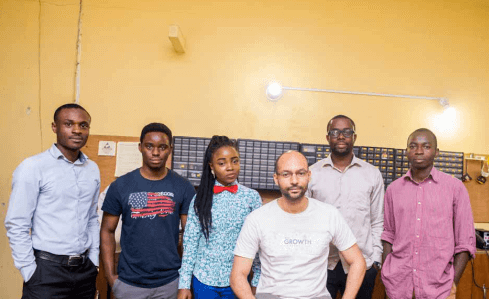
Want to save on energy costs? How much energy does your air conditioner really consume? So there’s been a power outage, should you switch on the generator or the inverter?
These are all the questions GRIT Systems wants to answer for you. Founded in August 2015 by engineering and embedded systems maestro, Ifedayo Oladapo, GRIT Systems Engineering has built an internet-enabled device for monitoring power consumption.
Their GRIT Meter device, the G1, helps energy consumers quantify power consumption from multiple power sources. The device gathers data and presents it in a simple format using graphs and other visual means. Users can receive notifications and generate simple language reports about an “arbitrarily complex power supply mix.” This enables them to make informed data-driven decisions based on information gathered from their various power sources — solar panels, generators, inverters or the grid.
How does it work?
G1 captures data every five seconds and runs it through a cloud-based data engine that runs machine learning routines and analytics on the data. It, in turn, provides users with detailed information via their web and mobile platforms. It can also run energy balance simulations to help determine if and how alternative power sources would save its users money.
GRIT Systems was one of the thirty finalists that had a chance to pitch to the Nigerian presidency and Mark Zuckerberg at the 2016 Aso Villa Demo Day. (Aside: Ifedayo wrote about his experience at AVDD here.)
A bit of background
Prior to founding GRIT Systems, Ifedayo worked with Bosch Engineering for about 10 years. That’s where his background in developing embedded systems comes from. In 2011, he founded Dawn Fuel, a company focused on solar energy, specifically the sale of solar hybrid and auxiliary power systems. The goal was to prototype 7 devices to solve the problem of deficiencies in available solar and auxiliary power by 2014.
G1 was the fourth prototype they developed. It was initially designed to address two challenges the dawn fuel team had faced in designing solar hybrid systems: explaining the economics of solar systems in simple terms and providing data necessary for energy balance calculations. Twenty G1 devices were built, most have been deployed and all are still functional.
On the fabrication process
“It’s been tough but hopefully about to get easier,” says Ifedayo. The existing devices were partially built in Lagos. The enclosures were 3D printed and it typically takes 1-2 days to build a device once design is complete.
GRIT hopes to make 5-10 devices per day with new fabrication methods. Most materials have not been difficult to obtain as the team has become reasonably familiar with various import channels in the course of production. Ifedayo has said that they will most likely outsource production.
Projections for the G1 in 2017
“Our target for next year is to install 10,000 devices,” says Ifedayo. “We already have several hundred requests via our lead generation form, many of which are from estates or institutional clients that will require multiple devices.”

The team, now ten from the original two-man band, is working on completing the circuitry for a production ready device within the coming week.
Although the G1 has a wide range of functionality and applications, the team has found it difficult to explain the full scope of features. They thus decided to focus on one use case for now: estates, office complexes and apartment buildings that need to calculate the true cost of energy for their different energy sources.
GRIT plans to still promote renewable energy but to do so by giving the user data rather than telling them what to do.










